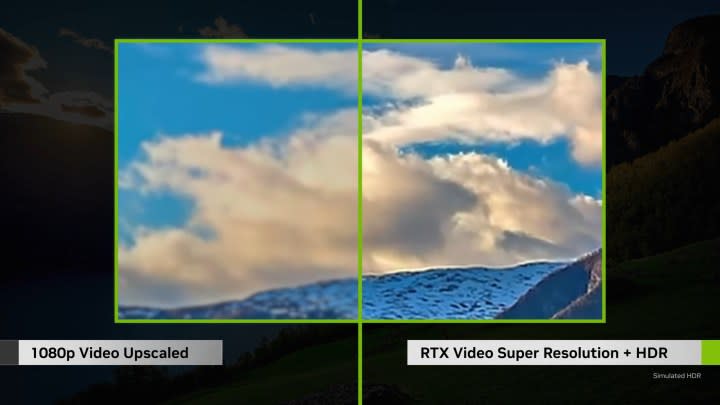Nvidia’s RTX Video can upscale blurry YouTube videos
This article contains affiliate links; if you click such a link and make a purchase, Digital Trends and Yahoo Inc. may earn a commission.

Nvidia’s latest driver update does more than just introduce support for the new RTX 4070 Ti Super — it also enables AI video upscaling through a new feature. Dubbed RTX Video HDR, this feature relies on AI to turn SDR videos into HDR. Enabling it is easy, but there are a couple of caveats.
Nvidia describes it as a new technology, powered by AI and RTX tensor cores, that dynamically converts SDR video to HDR10 quality. This improves visibility and adds more detail, sharpness, and vibrance. Earlier in 2023, Nvidia released a similar feature that now works in tandem with this one, called RTX Video Super Resolution, which upscales videos up to 4K.
RTX Video HDR only works on videos, so you can’t use it the way you’d use DLSS to upscale your games. However, it’s available in both Microsoft Edge and Google Chrome.
Nvidia shared a video showcasing the feature, turning blurry images into something brighter and more detailed. Having played with it myself a little bit in various older YouTube videos, the result is a little more subtle than what’s seen in Nvidia’s preview. However, it’s not as easy to tell when you’re not seeing these results side-by-side.
Introducing RTX Video HDR: AI-Upscale Video to HDR Quality
To use RTX Video HDR, you’ll need a — surprise — Nvidia RTX GPU. It doesn’t need to be one of the top GPUs, though. Any RTX card will do, meaning RTX 20-series or later. Owners of older graphics cards are locked out of this feature because Nvidia utilizes tensor cores to make the magic happen. You also need a monitor that supports HDR10.
If you meet those requirements, all you need to do is download Nvidia’s 551.23 Game Ready driver and toggle RTX Video HDR on in Nvidia’s Control Panel. You also need to have HDR10 enabled in Windows.
Aside from adding RTX Video HDR, this round of drivers includes support for the RTX 4070 Ti Super GPU, but also adds Ultra Low Latency Mode to DirectX 12 games. In titles that already benefit from Nvidia Reflex, you won’t need to enable this, but in games that don’t, it’s worth trying out.
RTX Video HDR marks yet another venture into AI for Nvidia, but it’s nowhere near as impressive as DLSS 3.5. However, even if it’s not groundbreaking tech, it can help, and there’s no reason not to enable it if you have the hardware to support it.


